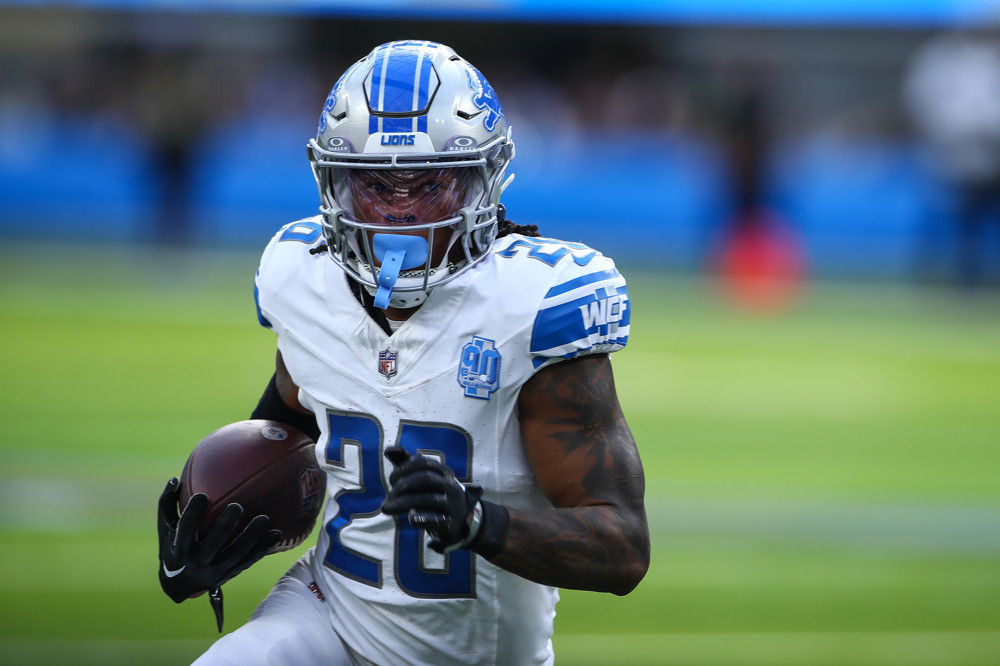In best ball, simply picking the right players is not a realistic strategy. We also need to consider the implications of the no-transaction format.
A big part of that is roster construction. In other words, how many players at each position should we draft? It’s a simple question with a complicated answer for a couple of reasons.
First, our decisions should be dynamic to our positional strength — a function of how we use our early draft capital. If our QB1 is Jalen Hurts, he’s very likely to be the quarterback who counts in our lineup an overwhelming majority of weeks. In that scenario, selecting just two QBs (with different bye weeks, of course) is correct. But if the first QB we draft is in the Tua Tagovailoa/Jared Goff range — players with no rushing juice who are being treated as fringe top-12 options — then taking three makes sense.
Second, we need to account for positional volatility. The weekly range of outcomes at wide receiver is wider (no pun intended) than at running back, tight end, and quarterback. And unlike other best ball formats, DraftKings awards 3.0-point bonuses for 300+ passing yards, 100+ rushing yards, and 100+ receiving yards. Thus, wide receivers will be our most-rostered position given the full-PPR and bonus-incentive structure (more on that below).
Finally, we need to consider payout implications. In DraftKings’ flagship Millionaire tourney, we get nothing for finishing third place in our initial 12-man group and should not be worried about taking on risk if it means our chances of an extremely strong team are improved. (While this approach is counterintuitive to most season-long players, DFS players are already comfortable with it given the natural swings of daily fantasy). With $1.5 million up top (and another $1 million to second place) compared to $40 and a hearty handshake for finishing second in Week 15, a “go big or go home” approach is how we should be playing.
For our full DraftKings rankings specific to the format, click here.
NOTE: The “Herzig’s Take” section refers to Justin Herzig’s thoughts as of May 2, 2024. Justin won the 2023 $2,000 Luxury Box and placed second in the $555 Millionaire tournament.
DRAFTKINGS FORMAT
* 12-team leagues, 20-player rosters
* Full-PPR, bonuses for 300-yard passing games and 100-yard rushing/receiving games. No D/ST or K.
* Starting lineup: QB, RB, RB, WR, WR, WR, TE, FLEX
QUARTERBACKS
Recommendation: Take two if selecting an elite option inside the first five rounds OR three (including a team’s starter and backup projected for a handful of starts) if waiting.
Analysis: As the quarterback position evolves with more true dual-threats, we are seeing higher-ceiling players with rushing floors distance from their peers. That elite quarterback strategy backfired last year as the top of the hierarchy failed to separate at historically high second-/third-round ADPs (more on that here), but taking an upside option with early draft capital is live on DraftKings where those elite signal-callers can distance further with bonuses; Josh Allen and Jalen Hurts outscored Dak Prescott, fantasy’s QB3 in points per game, by 60.8 and 19.8 total points on DK compared to 49.8 (-11 difference) and 13.9 (-5.9) in non-bonus formats.
We've launched a new NFL Best Ball product
Best Ball is a draft-only format. No trades, no waivers, and no setting lineups. Our Best Ball team includes a mix of the most successful players and highly-regarded fantasy analysts: Adam Levitan, Justin Herzig, Evan Silva, Mike Leone, and more.
This product is designed to go well beyond our industry-leading rankings, including ADP, Late-Round Targets, Players to Scroll for, Projected Ownership, Market Movement Reports and more.
Click below to learn more about what’s inside our NFL Premium Best Ball subscription.
Best Ball Product Details » Already a subscriber? Log In

